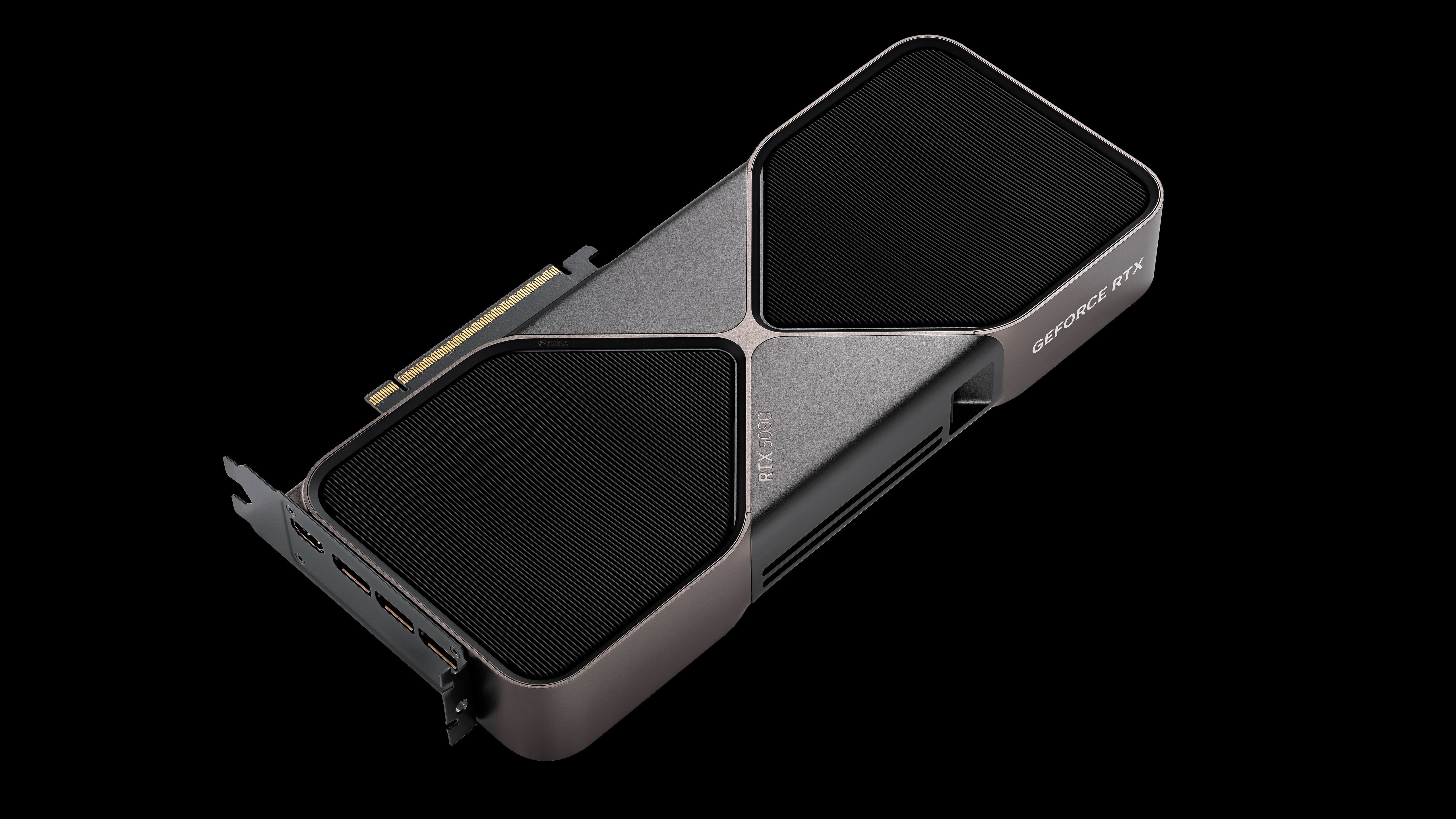Nvidia RTX 5090D V2 limits AI performance even more with 25% less VRAM and bandwidth — downgraded gaming flagship keeps same $2,299 MSRP in China

Nvidia has discreetly introduced the GeForce RTX 5090D V2 to compete against the best graphics cards in China. The latest Blackwell-based gaming graphics card is a downgrade of the original GeForce RTX 5090D, featuring a 25% reduction in memory capacity and bandwidth to comply with the U.S. export restrictions to China.
The difference between the GeForce RTX 5090 and the GeForce RTX 5090D was relatively marginal. Both graphics cards possess identical specifications; however, Nvidia imposed a minor restriction on the AI performance of the GeForce RTX 5090D, which allowed for its export to China at the time.
The GeForce RTX 5090's 680 fifth-generation Tensor Cores provide up to 3,352 AI TOPS of performance, whereas the GeForce RTX 5090D offers only 2,375 AI TOPS, representing a 29% reduction compared to its vanilla counterpart.
The latest GeForce RTX 5090D V2 has undergone a more radical transformation. Nvidia has made substantial changes to the graphics card's memory subsystem, reducing both capacity and bandwidth. The GeForce RTX 5090D V2 still employs GDDR7 memory chips operating at 28 Gbps, but has fewer of them, as Nvidia has seemingly disabled some memory channels.
Nvidia GeForce RTX 5090D V2 Specifications
Graphics Card | GeForce RTX 5090 | GeForce RTX 5090D | GeForce RTX 5090D V2 |
|---|---|---|---|
Architecture | GB202 | GB202 | GB202 |
Process Technology | TSMC 4N | TSMC 4N | TSMC 4N |
Transistors (Billion) | 92.2 | 92.2 | 92.2 |
Die size (mm²) | 750 | 750 | 750 |
SMs | 170 | 170 | 170 |
GPU Shaders | 21,760 | 21,760 | 21,760 |
Tensor Cores | 680 | 680 | 680 |
Ray Tracing Cores | 170 | 170 | 170 |
Boost Clock (MHz) | 2,407 | 2,407 | 2,407 |
VRAM Speed (Gbps) | 28 | 28 | 28 |
VRAM (GB) | 32 | 32 | 24 |
VRAM Bus Width | 512 | 512 | 384 |
L2 / Infinity Cache | 96 | 96 | 96 |
Render Output Units | 176 | 176 | 176 |
Texture Mapping Units | 680 | 680 | 680 |
TFLOPS FP32 (Boost) | 104.8 | 104.8 | 104.8 |
AI Performance (AI TOPS) | 3,352 | 2,375 | 2,375 |
Ray Tracing Performance (TFLOPS) | 318 | 318 | 318 |
Bandwidth (GB/s) | 1,792 | 1,792 | 1,344 |
TBP (W) | 575 | 575 | 575 |
Launch Date | January 2025 | January 2025 | August 2025 |
Launch Price | $1,999 | $2,299 | $2,299 |
The GeForce RTX 5090D V2 has 24GB of memory, 25% less than the GeForce RTX 5090 or GeForce RTX 5090D. Logically, the memory interface is also affected. It has been reduced from the original 512-bit design to a 384-bit one, resulting in the GeForce RTX 5090D V2 offering 25% lower memory bandwidth.
A regular GeForce RTX 5090 or GeForce RTX 5090D has 16 memory channels, allowing those cards to tap into 16 2GB GDDR7 memory chips for a total of 32GB. The GeForce RTX 5090D V2 has four disabled memory channels, meaning it's only connected to 12 memory chips. So, if you were to dissect the China-exclusive graphics card, there would be four empty pads with missing memory chips.
A complete GB202 chip includes 128MB of L2 cache. Consumer graphics cards such as the GeForce RTX 5090 and GeForce RTX 5090D already do not utilize the entire silicon; hence, the consistent 96MB L2 cache has remained consistent across both SKUs. However, Nvidia has not disclosed any information regarding the L2 cache of the GeForce RTX 5090D, so it remains uncertain whether it has been modified.
Get Tom's Hardware's best news and in-depth reviews, straight to your inbox.
The reduction in memory bandwidth could negatively impact the RTX 5090D V2's gaming performance, but the loss of both capacity and bandwidth is especially bad news for AI, which is the primary use case scenario for these graphics cards in China. It's the same reason why the watered-down GeForce RTX 5090D existed in the first place.
What is particularly frustrating for the Chinese market is that Nvidia is selling the GeForce RTX 5090D V2 at the exact $2,299 MSRP as the previous GeForce RTX 5090D. Consumers are consequently paying the same amount for a product that has 25% less memory capacity and bandwidth. Furthermore, since the concept of MSRP has become largely irrelevant in today’s market, consumers will end up paying even more for even less.
Follow Tom's Hardware on Google News to get our up-to-date news, analysis, and reviews in your feeds. Make sure to click the Follow button.

Zhiye Liu is a news editor, memory reviewer, and SSD tester at Tom’s Hardware. Although he loves everything that’s hardware, he has a soft spot for CPUs, GPUs, and RAM.
-
vanadiel007 I could see AMD gaining ground in that market. Not everyone needs AI and all that 5090 "performance".Reply -
Air2004 "The GeForce RTX 5090D V2 has four disabled memory channels, meaning it's only connected to 12 memory chips. So, if you were to dissect the China-exclusive graphics card, there would be four empty pads with missing memory chips."Reply
Does this mean that it could possible to re-enable those channels if one were so inclined? -
Alex/AT Reply
Doubt that. The signed firmware probably limits it as well.Air2004 said:"The GeForce RTX 5090D V2 has four disabled memory channels, meaning it's only connected to 12 memory chips. So, if you were to dissect the China-exclusive graphics card, there would be four empty pads with missing memory chips."
Does this mean that it could possible to re-enable those channels if one were so inclined?